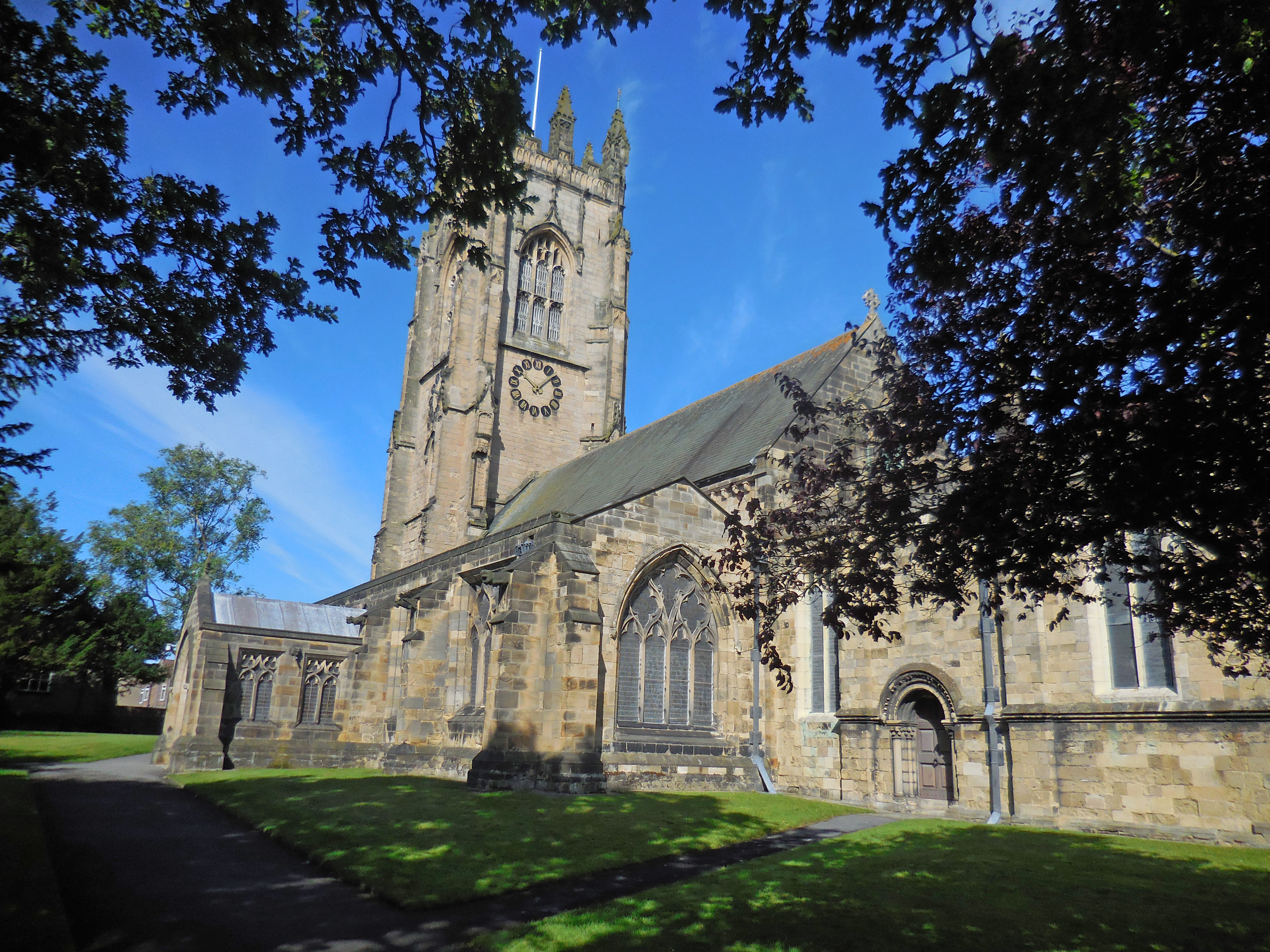Driffield, All Saints

Driffield Church, Image copyright
Driffield, All Saints
ALL SAINTS CHURCH, DRIFFIELD
There is a record of there being a church in Great Driffield in 1080 of Saxon origin, the condition of which is not known, but it has been suggested that it may have been in ruins.
A Norman church was built on the site 1170-1200, with small round headed clerestory windows and plain cylindrical nave piers.
The rectangular rather low chancel is of the same period, with its deeply splayed window openings, chancel doorway and piscina, all in Norman traditional style.
The south doorway is of a more advanced period. The extension in the width of the nave is attributed to the first quarter of the 14th century.
At the time of this enlargement the pointed arch between the nave and chancel is supposed to have been erected in lieu of the Norman style.
Also in the 14th century the South aisle was widened and given new windows with curvilinear tracery.
The chancel windows, that in the East being a fine specimen of five lights, were inserted in the 15th century, and those in the North aisle half a century later.
The square embattled tower is an excellent specimen of the perpendicular style, with double buttresses at the corners, panelled with canopied niches,
and finished with crocketted pinnacles, rising to a height of 110 feet.
This tower was built by the Hotham family about the middle of the 15th century;
the price of absolution from a vow one of the family had made to go to the Holy Land on pilgrimage in case of recovery from a dangerous illness,
or as some say, in expiation of a murder committed. Upon the tower are the arms of the Hothams (of Scorborough).
Also on the tower are the arms of several other local land owning families; Routh, Swillington, Beeston, Rosselyn.
Most significant Robert Rolleston of Beverley was Provost of Beverley Minster and also Prebendary of Driffield - in effect patron of this church from 1436 to 1450,
and was one of the very few Prebendaries to have any local connection at all.
It seems reasonable to suggest that the tower was built during the time that Robert Rolleston was Prebendary, towards the middle of the 15th century.
Like many great towers of East Anglia it is probable that this is a "wool tower" -the result of a group of wealthy landed gentry simply deciding to devote some of their sheep farming profits to the glory of God.
This tower forms a conspicuous and beautiful feature when seen rising above the houses from many points of view.
At the foot of the tower inside the church is the Western arch, under which the organ was erected in 1829, thus obstructing the sight of the architecture of the lower part of the tower.
Previous to this, the musical parts of the service were sung by a choir of amateur singers, accompanied by 10 hautboys, some wind instruments and a bass viol.
Higher up were three bells inscribed :
Hoec Campana Beate Trinitate: fiat 1593. R.B.
In honore Sancte Trinitatis: Anno Domini. 1593
In Altissimo Deo Gloria. 1685; T.D. Churchwarden. S.S. York.
The latter, it would appear was the only bell anterior to 1593, as the date 1685 refers to its re-casting at York, in consequence of having become worn out by age and use.
The church underwent a restoration between 1878 and 1880, during which much work was carried out, including the extension of the North aisle, at the end of which is a doorway into the new vestry;
and over it was placed the new organ, by Lewis & Co. London.
Also at the restoration of 1878-1880, three new bells were added from the foundry on Mr. T. Mallaby, of Masham.
These are inscribed:
Let everything that hath breath praise the Lord, H. Newton, Vicar.
Praise Him in His power
Praise Him in His Holiness
making together a melodious peal of six.
It is believed that the bells were rung regularly up to the late 1950's, at the time there was a difficulty in finding people who will give their time for this,
and who are willing and prepared to stay for divine worship. After that they were only chimed but not fully rung.
In 1971 the organ from the closed St. John's church, a Hill organ, was transferred and combined with several ranks of pipes taken from the Lewis organ (1880), and three new stops by Messrs Walkers,
combined together in the position of the former organ under the Western arch.
After much deliberation in 1997 the bells were removed, tuned and re-hung with new ringing fittings in the existing, but strengthened, bell frame by John Taylor Bell Founders Ltd.
On 2nd May 1998 prior to a service of rededication of the bells and in thanksgiving for the Golden Wedding of Dr and Mrs Alistair Dewhirst,
who where married at All Saints on 1st May 1948 and also where one of the main benefactors of the restoration, a peal of 5040 Minor (6M) was rung in 2 hours 38 minutes.
Ringing continues with the small band of ringers, none of the ringers who learnt in 1998 when ringing restarted are still ringing and we find it difficult to recruit new ringers but are always on the lookout.
The Church has recently added glass doors in the entrance porch to improve the welcome to the building along with a ramp to help with access.
Click here to download the above text.
|

